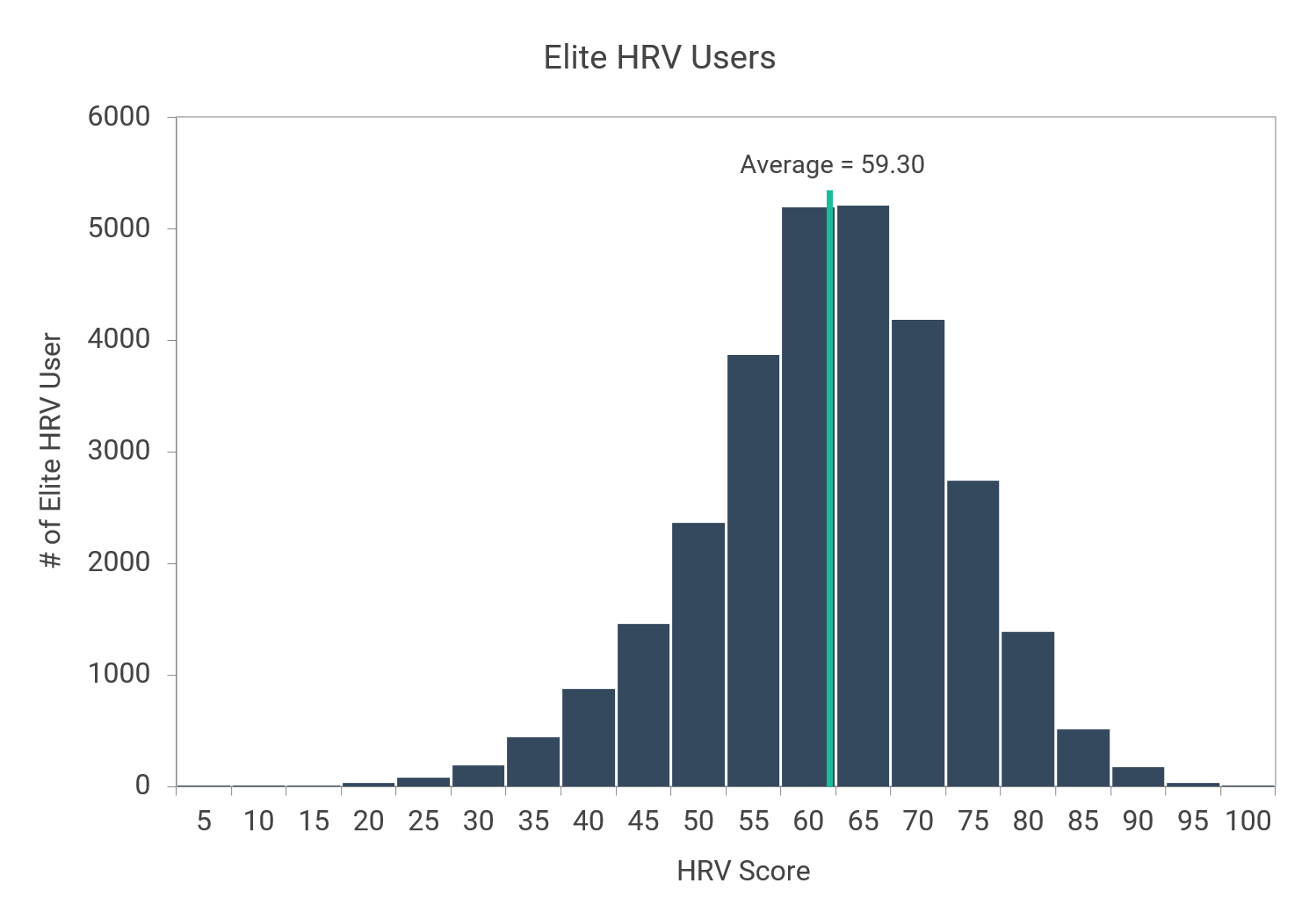Heart Rate Variability by Age and Gender Breakdown
The Elite HRV population sample was further broken down into age and gender groups based on user input data to allow users to compare themselves to others within their same demographic group. The Elite HRV users (based on the 35% of users that optionally input their age and gender details) are 13.9% females and 86.1% males.
As can be seen from the charts and tables below, HRV decreases with increasing age for both genders. To learn more about how gender influences HRV and why HRV decreases with age, see this post.
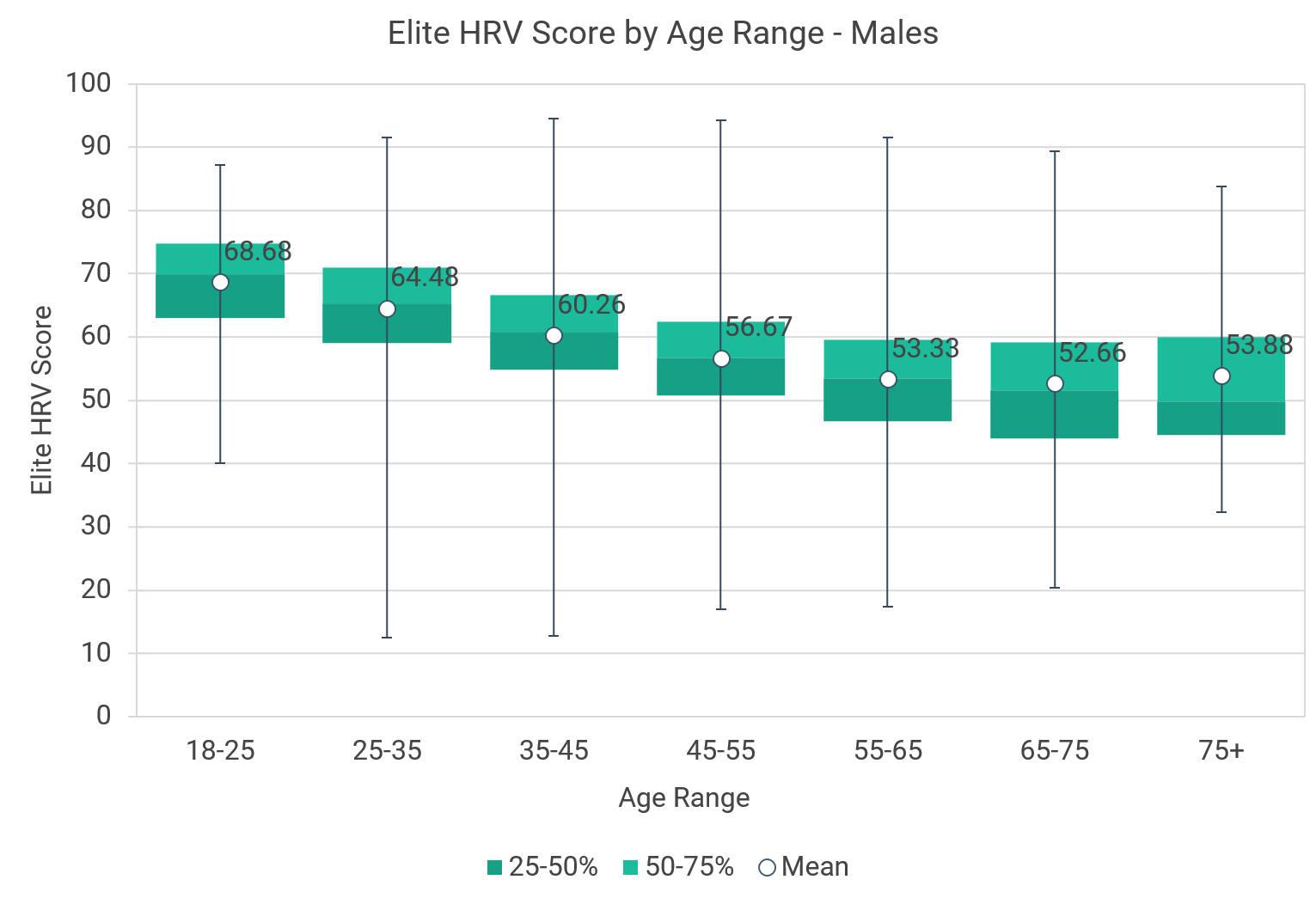
Chart 2 – This chart shows Elite HRV scores statistics for 8,873 males over different age ranges. The data is presented as box plots that represent the medians, 1st and 3rd quartiles, and extreme values (minimums and maximums). There are also markers for means at each age range.
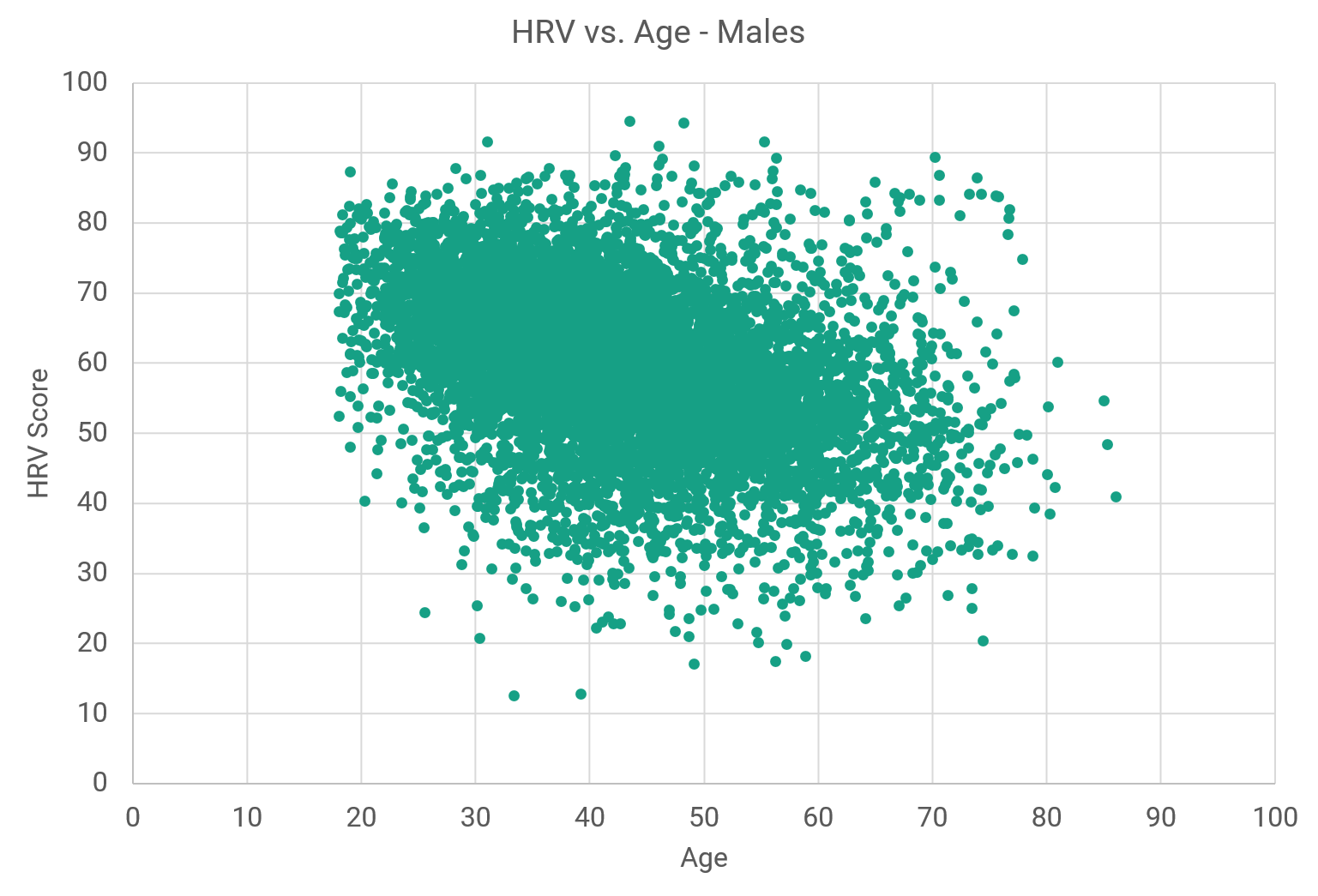
Chart 3 – This chart shows HRV Score vs. Age for 8,873 Elite HRV male users.
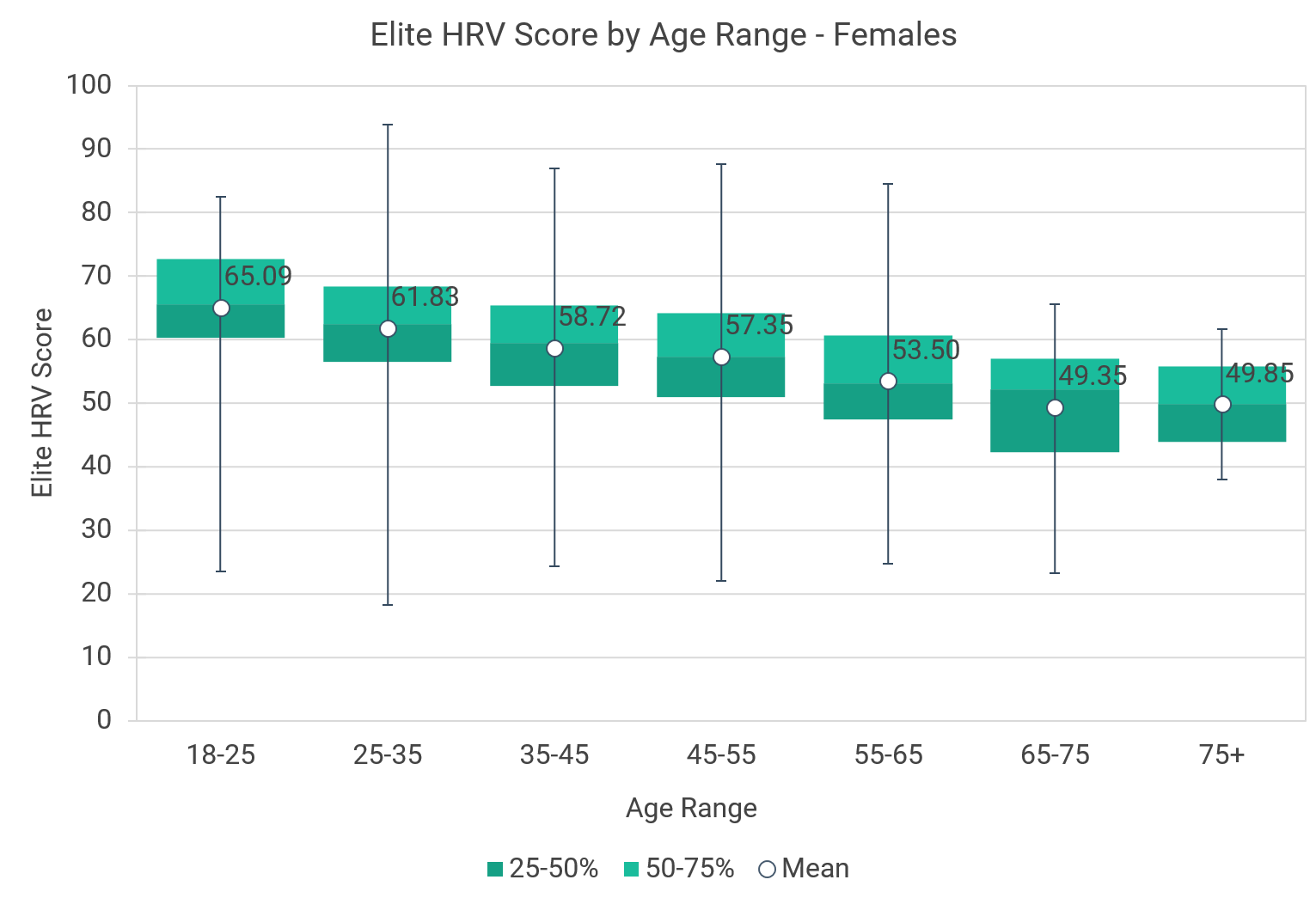
Chart 4 – This chart shows Elite HRV scores statistics for 1,435 females over different age ranges. The data is presented as box plots that represent the medians, 1st and 3rd quartiles, and extreme values (minimums and maximums). There are also markers for means at each age range.
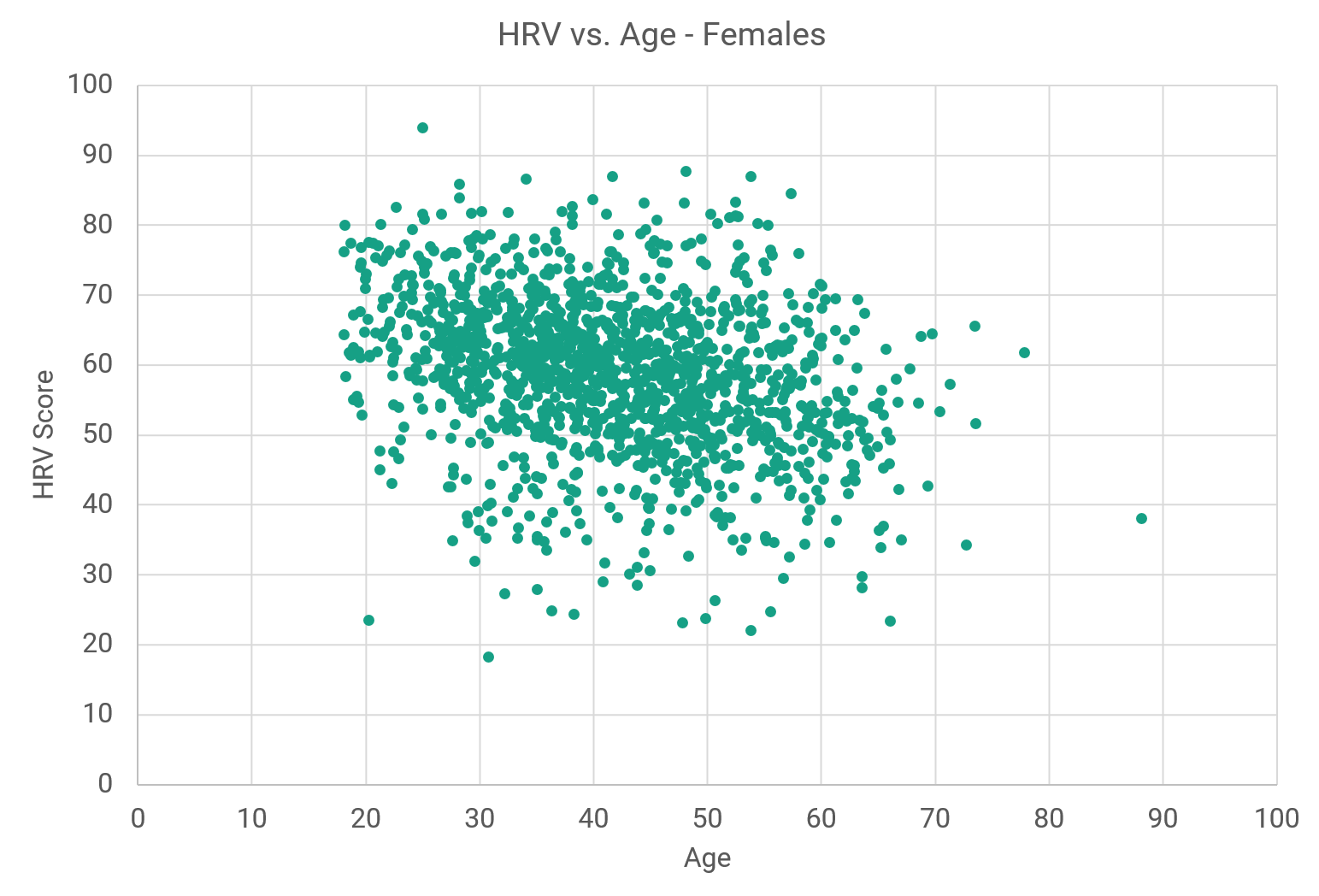
Chart 5 – This chart shows HRV Score vs. Age for 1,435 Elite HRV female users.
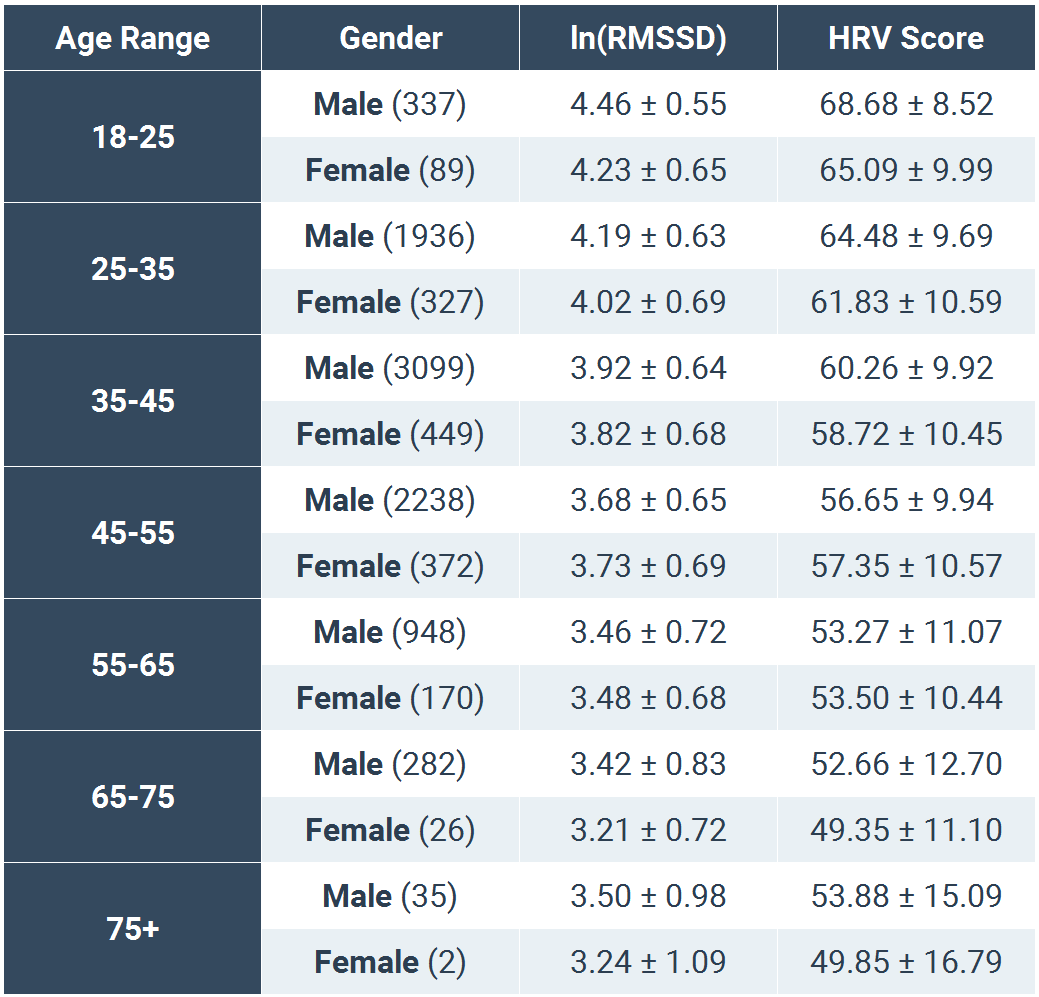
Table 1 – Data from 10,308 Elite HRV users showing ln(rMSSD) and Elite HRV Score presented by age range and gender.
Elite HRV Scores Compared To Other Platforms
We get questions about how Elite HRV’s “HRV Score” compares to the scores from other HRV software applications so we thought it might be helpful to show how Elite HRV’s normal demographic values translate to other platforms.
Keep in mind, the data used to calculate these scores was gathered on Elite HRV’s platform, so it does not necessarily represent the user populations of those other platforms and does not take into account different artifact cleaning algorithms and other potential differences. There are other HRV software applications that are not listed in the below table because they either do not publish their scoring system or do not have a large user base.
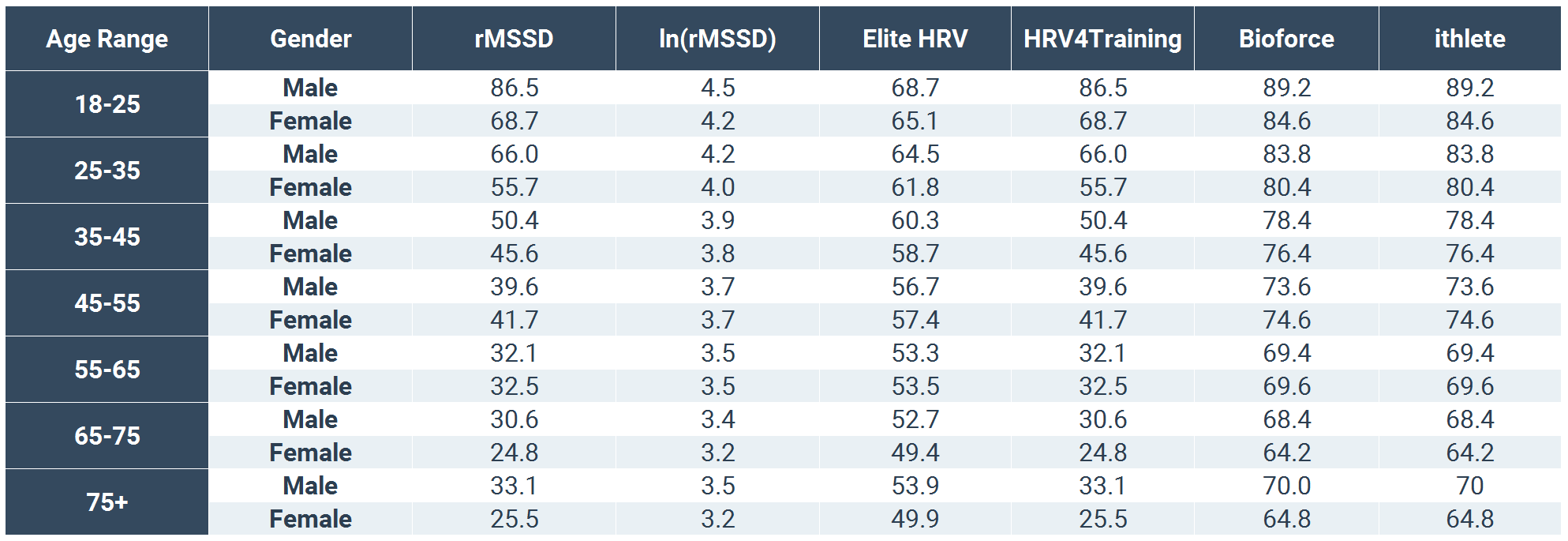
Table 2 – Data gathered on Elite HRV platform shows rMSSD, ln(rMSSD), and “HRV Scores” for Elite HRV and is calculated for other HRV software applications based on published calculations. The data does not necessarily represent the user populations for the other HRV platforms.
